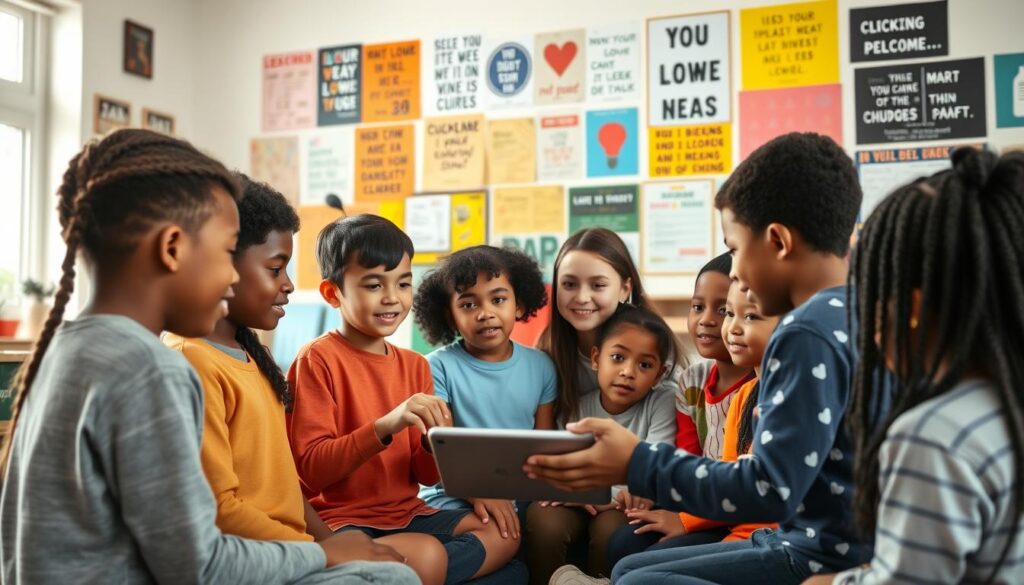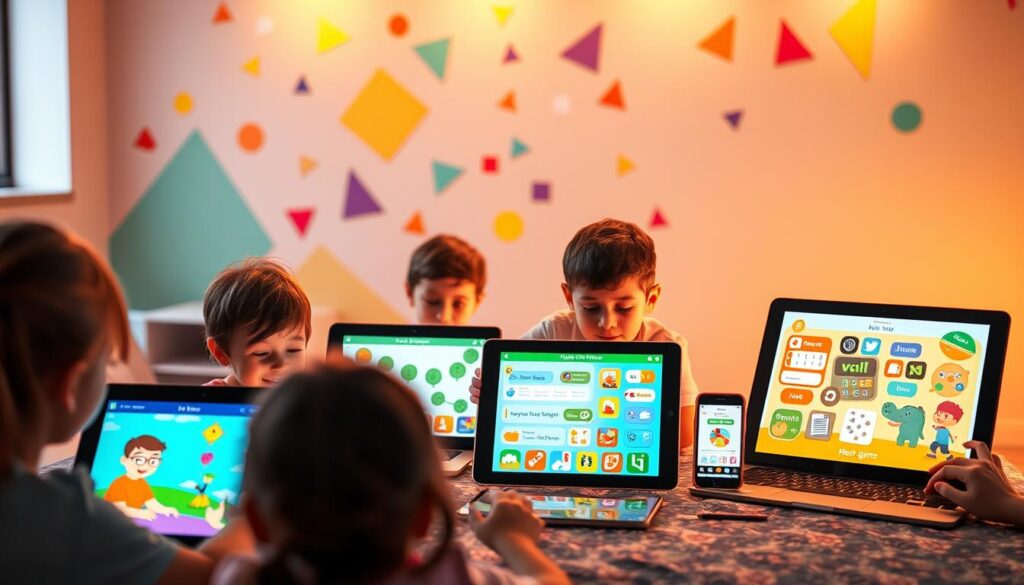Hi there! I’m Zara Maddison, and I’m 12 years old. I run a website called Assetsforkids. It helps other kids learn about money and finances. You might think you’re too young to start making money, but I’m here to tell you that’s not true!
I discovered something amazing about kids making money online through teaching others. The online learning world is huge and growing fast. By 2030, experts say it will be worth 645 billion dollars! That means there’s plenty of room for young entrepreneurs like us.
Here’s the cool part: people who create learning materials online earn between $200 and $1,000 every month on average. Through educational content creation, I’ve learned that age doesn’t matter when you have great ideas and want to help others.
This isn’t about getting rich quick. It’s about building skills that will help you your whole life while teaching other kids important stuff they need to know. Ready to learn how you can do it too?
Why I Started Making Money from Teaching Other Kids
I started teaching other kids because I saw my friends struggling. Math was easy for me, but hard for them. They would stress over homework while I finished fast.
At first, I helped out of kindness. But my mom said I could get paid for tutoring. I felt unsure if my friends would pay me. Would they think I was being greedy?

Then I learned that peer-to-peer learning is really effective. Kids get things better from other kids. Adults often use hard words and examples that don’t make sense to us.
My first student was Jake, my neighbor. He paid me five dollars for help with fractions. After one hour, he understood it! His smile showed me I was making a difference.
That’s when kids entrepreneurship became clear to me. I could earn money and help others at the same time. Teaching became my passion and business. It felt great to see my friends do better in school and save money for myself.
Finding Your Special Teaching Topic That Kids Actually Want to Learn
Every kid has something special they can teach others. I’m here to help you find yours. It’s not about being good at everything. You just need to find one thing you’re really good at and others struggle with.
Pay attention to what your friends ask you for help with. Do they come to you for math help? Or maybe you’re the one they turn to for art or gaming tips. These moments are clues to your teaching superpowers.

Try this simple exercise that changed my life. Make three lists on paper:
- Subjects I actually enjoy (not just ones I’m good at)
- Skills I’ve mastered that others find hard
- Problems I’ve solved for friends or family
Your perfect topic is where these lists meet. Maybe you love science and help kids with their projects. Or perhaps you’re great at explaining video game levels that stump others.
Remember, educational resources don’t have to be about school. Kids want to learn about friendship, drawing, and more. Your age is a big plus when making digital products for kids.
You know what confuses kids because you’ve been there too. This makes your teaching more relatable than any adult’s. By solving real problems, you’re on your way to online income for children.
Creating Educational Content That Generates Income for Kids: My Proven Method
Let me show you how I make content that kids pay for. This method has turned my knowledge into money. You don’t need fancy stuff or perfect skills to start.
Writing Down Your Ideas
I start by jotting down every teaching idea I get. I use a simple notebook for this. I write down things I’m good at or when friends ask for help.
Don’t worry about organizing at first. Just write down your thoughts. I write random stuff like “how to solve math word problems” or “easy ways to remember history dates.” These ideas often become my best content creation for kids projects.
Breaking Big Topics into Small Lessons
Big subjects can be too much for kids. I break them down into small, easy lessons. Instead of teaching “all of algebra,” I focus on one skill like “solving for x in simple equations.”
Each lesson should take 10-15 minutes. This keeps kids interested without stressing them. Small lessons also mean more chances to earn money.
Games make learning fun, not boring. I add quizzes, challenges, and hands-on activities to lessons. Simple ideas work well – like turning vocabulary practice into a game or making math races.
Interactive elements keep kids coming back. When they have fun, they tell their friends. This kid-friendly teaching approach has really helped my sales.
Adding Pictures and Videos
Visual content helps kids learn faster. I use my phone to record videos or take pictures of my work. I aim for clear shots that show the steps.
Free apps help me add text to images or trim videos. The goal is authenticity, not perfection. Kids connect with real content that feels helpful. Simple visuals often work better because they feel more relatable.
The Best Places to Share Your Educational Content Online
When I started sharing my educational content online, I had to find the best places. There are many safe options for young content creators like us. You can share your teaching materials with adult help.
Here are the best online platforms for kids to consider:
- Teachers Pay Teachers – Perfect for selling worksheets, lesson plans, and educational games
- Etsy – Great for creative educational crafts and printable materials
- Personal websites – Build your own simple site with help from parents
- Social media platforms – Share content with strict parental guidance only
Teachers Pay Teachers is my top pick. It’s made just for educational stuff. Top sellers make over $50,000 a year! You can learn more about selling educational printables to start your own.
Digital content sharing needs safety rules. Always have a parent or guardian help with accounts and online chats. Never share personal info like your name, address, or school.
Building an online presence takes time. Be patient. Focus on making good educational content, not fame.
Start with one platform and get good at it before trying others. This way, you learn safely and grow in confidence as an educator.
How to Set Prices That Kids Can Actually Pay
Figuring out how much to charge kids was tough. Kids don’t have a lot of money. They get a small allowance or need to ask their parents first.
So, pricing for kids must be different from adult prices. I started low with my products. I priced them at $2-5 to make them affordable for kids.
Even though some creators make a lot, I had to start small. I thought about what I could afford with my own money. If it was too pricey for me, it was too much for kids.
Creating affordable educational content doesn’t mean you have to stay cheap forever. As you grow, you can raise your prices. Offering free samples helps kids see the value before they buy.
What I Charge for Different Types of Content
Here’s my kid-friendly pricing that works:
- Quick tip sheets: $1-3 (perfect for first-time buyers)
- Study guides: $5-8 (more detailed but still affordable)
- Video tutorials: $10-15 (higher value content)
- Complete courses: $20-25 (my premium offerings)
I also offer bundle deals. Kids can get three items for the price of two. This gives them more value and I make a bit more.
Getting Other Kids to Find and Buy Your Educational Content
The best way to grow your audience is by genuinely helping other kids. Marketing for kids is about connecting with those who need your help. It’s not about being pushy or annoying.
Start with your classmates and friends. If you see someone struggling, offer to help. Word-of-mouth is very powerful among kids.
Ask your teachers if you can share your resources. Many teachers love extra materials. This helps you build credibility and make a difference.
Social media can be great for building a kid audience, but always ask your parents first. Share short videos or posts that show your teaching style. Don’t just promote – actually teach something valuable in each post.
Connect with parents looking for extra learning resources. Many parents search online for homework help. When you’re promoting educational content, focus on solving real problems kids face.
Remember, the goal isn’t to sell to everyone. Focus on helping kids who really need what you’re offering. Building authentic relationships takes time, but it creates loyal customers.
Be patient and consistent. Successful young content creators started by helping a few kids well. Those satisfied customers became their biggest advocates.
My Biggest Mistakes and How You Can Do Better Than Me
Let’s talk about my mistakes so you can avoid them. Learning from mistakes is key, but I wish I knew these things sooner.
I made a big mistake by making content too hard. My math tutorials were tough, even for high schoolers. I learned to ask my friends what they wanted to learn first.
I also priced my work too low at first. I charged just $1 for hours of work, which made me feel bad. Avoiding common errors means looking at what others charge.
Here are my biggest mistakes:
- Creating content without asking kids what they wanted
- Pricing my work too low and feeling discouraged
- Not sticking to a regular schedule for making new content
- Taking negative comments too personally
It was hard balancing school and my business. I learned to set specific times for work. These kid entrepreneur tips helped me stay organized and less stressed.
Remember, making mistakes is normal. Each mistake taught me something valuable for the next time.
Conclusion
Starting my own business as a kid taught me something special. We can offer something unique to other kids. The future of learning belongs to young creators who know what kids need.
You now have a blueprint for starting your own business. Choose a topic you love and that others find hard. Make content that talks directly to kids your age.
Use platforms where kids already spend time. Set fair prices so other kids can buy your stuff. The digital education market is growing every year.
This opens up great chances for young business owners like us. We’re not just making money. We’re also building confidence and helping other kids do well.
Begin with just one simple lesson or tutorial. Don’t worry if it’s not perfect at first. Making mistakes is part of learning.
Every expert was once a beginner. Your efforts to help kids learn are building skills for life. These experiences will help you in many ways, no matter what you do later.
The world needs more young voices in education. Your unique view can change another kid’s life. It can also help you earn money.